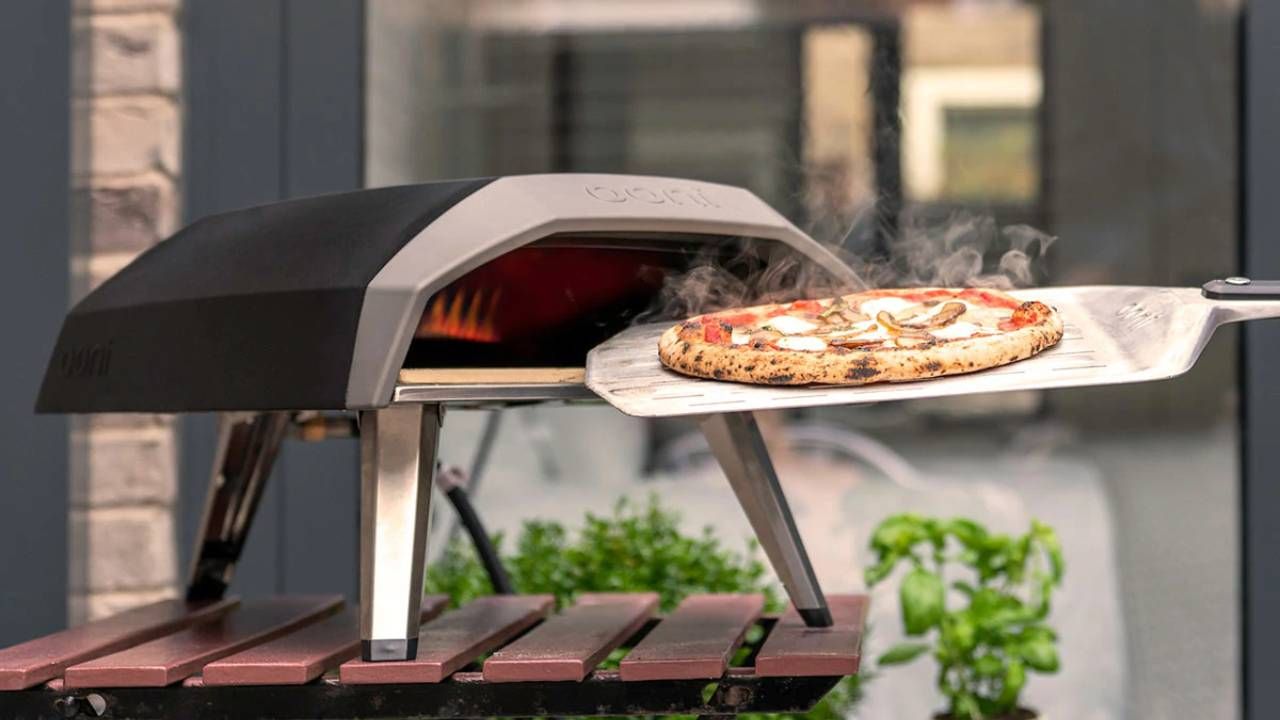

Want to know how to cook pizza at home? Many guides to making pizza at home will tell you it's incredibly complex. And some other ones go the other way and pretend it's overly simple. The truth, as is so often the case, lies somewhere in between.
Thankfully, T3's resident al fresco dining expert is here to supply the answers to your pizza-based questions. It's-a me! Derek-a Adams-a! I may be as authentically Italian as Wario from the Nintendo Switch games, but I do like a nice home-baked pizza. Just like momma didn't use to make.
Making pizza at home: the prep sequence
First you need one of the best pizza ovens, to place in your garden. Alternatively, if you have an indoor oven like the Sage Pizzaiolo or new Ooni Volt 12, set it up in the kitchen or outdoors if dry enough.
What you don't want to do is even consider using the kitchen oven because even the best oven is only going to hit 300ºC against a dedicated pizza oven's 400˚C-plus. Unless, of course, you want to experiment with using the pyrolytic cleaning setting to cook pizzas.
I'm kidding: do not under ANY circumstances do that because not only is it dangerous but the oven door locks once the process starts and by the time it's finished, the pizza will have turned to ash.
Before I divulge all the good things about home-based pizza making, I should forewarn you that it’s quite an art and there’s a steep learning curve involved. Not with the actual baking – anyone can do that, with a decent pizza oven – but the preparation. Pizza making is also incredibly messy so I would advise wearing an apron or you'll look like you've been on the receiving end of a flour fight.
To make proper Italian restaurant-style pizza you'll need the right type of flour – Italian-type 00 is the one to go for – and some spring water or, for real authenticity, salted water – preferably from the Mediterranean. Okay, perhaps you don't live near a spring, or the Med, but you can use bottled water. Or at the very least water that's been through the best water filter jug. Seriously, do not use tap water. This is an offer you can't refuse.
Sign up to the T3 newsletter for smarter living straight to your inbox
Get all the latest news, reviews, deals and buying guides on gorgeous tech, home and active products from the T3 experts
The next step is the kneading process (strictly no rolling pins here guys, so prepare to dig those knuckles in).
Once you’ve managed to create a soft, airy and extremely pliable dough, it’s time to start the proofing process which should absolutely not be skipped. In essence, you should divide the dough into palm-sized balls, place them on a lightly floured dish and cover them with a clean, damp tea towel. Proofing basically encourages fermentation of the yeast in the dough so it rises, producing a really light texture that bakes beautifully.
Oh, and did I mention an apron? Without one your clothes will be bombarded by flour no matter how careful you think you are.
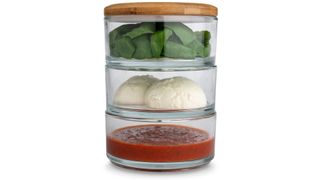
The excellent Ooni stack is a perfect home for your dough while it proves
However, if you really want to push the boat out, I would advise investing in the new Ooni Stack (£39.99), which is essentially a tower of three sealed glass chambers. It’s a perfect place for proofing pizza dough because you can actually see the results of the rising yeast. After about an hour at room temperature, the dough will be of perfect consistency for the next stage – stretching.
We can’t stress enough how important the stretching stage is and words alone cannot illustrate the difficult process of stretching so please study the hands of the pros – Youtube has a massive number of pizza dough stretching guides, as you'd expect. This is the one that came up top of the search results.
What you’re looking for is an almost gossamer thin centre and about quarter to half an inch of crust that hasn’t been pinched into a peak. Indeed, the crust needs to be nicely rounded or the resulting pizza will just look rank and make everyone walk out, and go home disappointed.
If you're looking for some top pizza dough recipes, Ooni's Recipe Page is a good place to start.
Making pizza at home: using pre-made dough
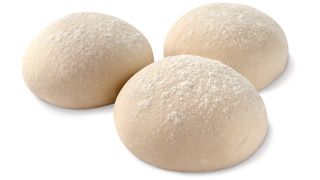
Ooni's Sourdough Dough Balls remove the prep sequence altogether
If I were you, I’d cut out the complicated and messy dough-making malarky and opt for pre-made pizza dough balls which you can buy both online and from some supermarkets. The act of making pizza dough is notoriously difficult and unless you really know what you’re doing, you simply won’t make a better dough ball than some of the producers highlighted below.
My favourite choices of pre-produced dough balls are those made by Peddling Pizzas from Warehouse Pizza (via the Gozney website below), Massarellas and pizza oven manufacturer, Ooni.
My new first choice is Peddling Pizza. Holy moly, what incredible results. After defrosting and two hours of proofing – at which point they expanded considerably in size – I bunged them in the pizza oven and watched in awe as the crust rose to at least five times the height. Not only that but the crust was full of air, light as a feather, full of leopard spots and deliciously salty. I don't know what these maestros put in their balls but the pizzas they produced were truly scrumptious.
You can order Peddling Pizza dough balls via the Gozney website – 12 freezable 250g dough balls for £25.95 plus postage. At £2.16 a ball, they're not quite as cheap as Massarellas but they taste absolutely amazing. Incidentally, Gozney also collaborates with the folks at Warehouse Pizza who provide several different pizza kits containing everything you need to make a perfect pizza, including a huge slab of top-notch mozzarella.

This is what happens when you put pizza dough made by Peddling Pizza in your pizza oven. Does it get any better than this?
Massarellas is an artisan pizza dough manufacturer based in Yorkshire. They sent us two bags of balls – Classic and Sourdough – and they were both off the scale in terms of texture and flavour. The Sourdough version became an instant favourite simply because it ticked every single box of what a perfect pizza should be: a huge airy, almost hollow crust with leopard spots, a dark crispy base, light as a feather throughout and full of authentic Italian flavour. Massarellas dough balls come in 220g and 250g sizes with the 220g having 27 dough balls and the 250g having 25 dough balls per box. It works out at around £1 a ball, which is superb value. Order some now – I guarantee you will not be disappointed. Massarellas delivers its dough balls on a Friday so get your order in before 11am on the Wednesday.

The fine, albeit irregularly shaped, results of a home-baked pizza using dough balls from Massarellas
Ooni Sourdough Dough Balls are another good choice and probably the easiest quality dough balls to source online. These light and pliable dough balls are made from top ingredients, including organic Caputo Tipo 00 pizzeria flour, live yeast, purified water and Himalayan pink salt for extra pizzazz. Available in sealed individual frozen packs of 24 and dispatched in a box packed with ice, you simply re-freeze them on arrival and follow the included instructions when ready to bake.
Incidentally, Ooni also recently announced that its Neapolitan and New York Pizza Mixes are now available to buy off the shelf at Waitrose and Lakeland. Simply add water to make authentic dough balls.
Northern Dough dough balls are easiest to get hold of because you can buy them in pre-frozen pairs from Waitrose and other supermarkets. However, they're not as fresh tasting as those from Massarellas, Peddling Pizzas or Ooni – nor as salty – and you will almost certainly need to cut the dried crust off their tops or leave a damp tea towel on top for about an hour. If you don't, your pizza base (or top) will look like a map of the world and have the texture of cardboard.
Yes, you’ll still need to stretch these pre-made dough balls yourself – remember no rolling pins – but you’ll be saving a lot of extra hassle (and mess) by cutting out the prepping part.
I should add at this juncture that, if you're a newbie, I would advise that you prepare an extra dough ball to counter the inevitable cock up because you will cock up at least one of the pizzas, whether it's the first, second or third. And believe me, you'll need that extra dough ball to save your pride.
Now you’ve sorted the dough, it’s time to think about toppings. Every pizza requires a thin film of tomato passata and one of our faves is Pizza Express tinned Passata, which includes basil and cracked black pepper. Mozzarella is not actually, strictly speaking, an essential ingredient but us Brits can't do without it – we’d recommend fresh buffalo mozzarella broken off into thumb sized chunks and sprinkled sparingly over the base. However, if using fresh buffalo mozzarella or even standard mozzarella that comes in a water-filled bag, it's important to first dry the chunks in some paper towel for an hour or more, or the pizza will look like a pink swimming pool. It's also fine to use grated mozzarella of the kind you buy in bags – it's what many artisan pop-up pros use. Be wary of how much cheese you put on the pizza or it'll smother the base when baked and look more like a New York pizza slice (no bad thing). The extra weight may also make it more difficult to fling the base off the pizza peel (see below).
What you bung on next is down to personal taste but capers, anchovies, jalapeño peppers, Italian sausage of various kinds are all fine ingredients that give pizzas real zing. However, you could just use tomato sauce and a few fresh basil leaves. A pizza can be anything from a very light snack to a full-on meal, depending on how high you pile your toppings, but go easy here or the pizza won't leave the peel if too loaded. If you want to be authentic about it, keep ingredients to a minimum. If you showed a stuffed crust pizza loaded with sausage, ham, 15 cheeses, mushrooms, olives and pineapple to a Neopolitan, he would probably attempt to strangle you with it.
My final – vital – tip is to ensure that the pizza peel – the flat thing you use to 'stab' the pizza into the oven with – is coated in a light dusting of flour (or better still Caputo Semola flour) or the pizza base will not slide off the peel properly and you will have an absolute disaster on your hands. Seriously, the whole pizza will either crinkle up, stretch, throw ingredients over the edge or, worse, fold over on itself. Your attempts to rectify the matter – while fighting against heat equivalent to the surface of the sun – will likely only make matters worse. Most first timers have learned that the hard way. So, remember, a decent dusting of flour on the peel and a well-timed forward-backwards jab so the base slides off in one smooth move.
You might also want to invest in a turning peel (Ooni makes an excellent one). This small circular pizza peel makes it much easier to turn the pizza midway through the baking process without accidentally shoving the pizza further back into the furnace. Now go forth, mio amico, and bake.
Get a proper pizza oven
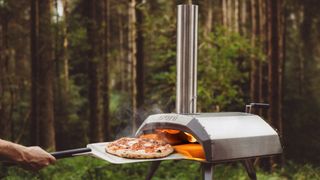
It just so happens, as I mentioned before, that T3 has a guide to the best pizza ovens, so do check that out.
Wood-fired, gas or electric you ask? As with the best barbecue grills, purists will tell you to do it as nature intended and get wood, while those in a hurry will say, use gas or electricity as it's quicker and more controllable. Most people won't be able to tell the difference anyway.
Keep your eye on the ball

The only caveat with baking pizzas using a dedicated oven is that you really need to keep a constant vigilance because with a properly heated pizza oven, it takes between 90 and 120 seconds to bake. Leave it for just a few seconds longer and you’ll be pulling out a blackened mass that resembles a council drain cover.
What should an authentic pizza look like? This is dangerous territory but everyone from Napoli we've met likes it not only thin and with quite minimal toppings but also decidedly scorched around the edges. They also want the crispy underneath to look brown-ish, dusty, indeed almost dirty.
Derek (aka Delbert, Delvis, Delphinium, Delboy etc) specialises in home and outdoor wares, from coffee machines, white appliances and vacs to drones, garden gear and BBQs. He has been writing for more years than anyone can remember, starting at the legendary Time Out magazine – the original, London version – on a typewriter! He now writes for T3 between playing drums with his bandmates in Red Box (redboxmusic).
-
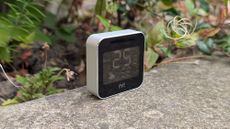 Eve Weather review: a compact, connected weather station for your smart home
Eve Weather review: a compact, connected weather station for your smart homeTemperature, humidity, and air pressure readings from your own little weather station
By David Nield Published
-
 Best robot lawn mower 2025: autonomous mowers that cut the grass so you don't have to
Best robot lawn mower 2025: autonomous mowers that cut the grass so you don't have toThese are the best robotic sward scythes to keep your lawn in tip-top condition while you sit back and relax
By Derek Adams Last updated
-
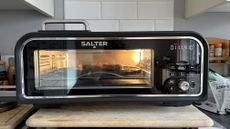 Salter RapidCook 400 Digital Air Fryer Oven review: great for steak and pizzas
Salter RapidCook 400 Digital Air Fryer Oven review: great for steak and pizzasThe Salter RapidCook 400 Digital Air Fryer Oven is big and heavy, but it’s also brilliant for cooking all sorts quickly at high heat
By Rob Clymo Published
-
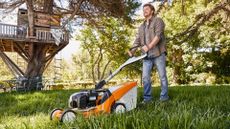 Best petrol lawn mower 2025: rugged lawn mowers for larger gardens
Best petrol lawn mower 2025: rugged lawn mowers for larger gardensTrim the sward with one of these top-rated petrol-powered lawn mowers
By Lizzie Wilmot Last updated
-
 Best pizza ovens 2025: enjoy the crisp, crunch and gooeyness of freshly-baked pizza
Best pizza ovens 2025: enjoy the crisp, crunch and gooeyness of freshly-baked pizzaFind the best indoor and outdoor domestic pizza ovens to make your al fresco bash go off without a hitch
By Derek Adams Last updated
-
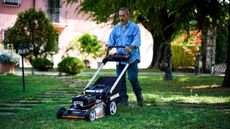 Best cordless lawn mower 2025: top battery-powered trimmers that tackle all types of turf
Best cordless lawn mower 2025: top battery-powered trimmers that tackle all types of turfReplace your rusty old mower and embrace the time-saving pleasures of the best cordless lawn mowers
By Lizzie Wilmot Last updated
-
 Best video doorbell 2025: who’s that ringing my bell?
Best video doorbell 2025: who’s that ringing my bell?Boost your home security with the best video doorbell, including the top brands such as Ring and Google plus many budget options
By Bethan Girdler-Maslen Last updated
-
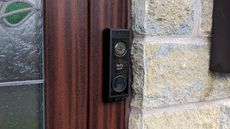 eufy E340 Video Doorbell review: dual cameras for a better view
eufy E340 Video Doorbell review: dual cameras for a better viewThe E340 impresses in every area – and there are no ongoing costs
By David Nield Last updated

